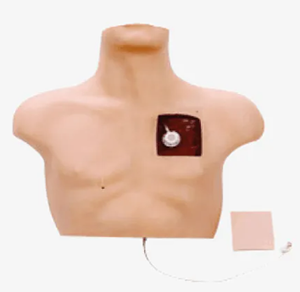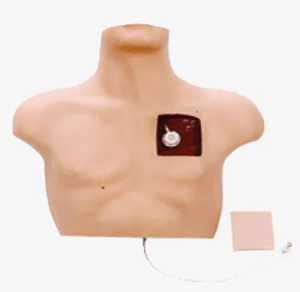In medical education, especially for medical students and junior medical staff, mastering key operational skills quickly is the only way to enter clinical practice. Venous interventional operation, as one of the common and critical skills in clinical practice, often poses a great challenge to beginners. In order to help students better master this skill, venous intervention training model has gradually become an important tool in medical education. So, can the intravenous training model help beginners quickly master these key skills? Let's break it down.
The challenges of intravenous intervention

Intravenous Intervention Training Model
Venous interventional procedures include procedures such as venipuncture, intravenous catheter placement, etc., which have a direct impact on patient survival in emergency situations. In clinical practice, the difficulty of intravenous intervention is not only reflected in the technique, but also how to make quick and accurate judgments in complex clinical situations. For beginners, the stability of the hand, the exact Angle of the needle and the choice of puncture point are all keys that need to be honed in practice.
However, in the face of such high-risk operations, beginners are often prone to operational errors due to lack of practical experience, which not only affects the safety of patients, but also increases the anxiety and lack of self-confidence of medical staff.
Advantages of venous intervention training model
1. Provide opportunities for repetition
The greatest advantage of the intravenous training model is its ability to provide repeated practice, which is not possible in real patients. Through the use of simulation models, beginners are able to practice venipuncture several times in a safe environment, fine-tune their skills, and gradually master the key points of puncture.
2. Simulate real clinical situations
Many modern intravenous intervention training models have highly simulated designs capable of simulating the skin, vascular structure, and responses of real patients. Through this highly reductive training, students can experience the operation process in a simulated environment very similar to the real clinical, so that they can be more confident and calm in the face of patients.
3. Immediate feedback and self-correction
Modern intravenous intervention training models are often equipped with feedback systems that provide immediate feedback when the student completes the operation, helping the student identify problems in the operation and make self-correction. This feedback mechanism accelerates the learning process, enabling students to improve their techniques and enhance their judgment more quickly.
4. Effective training supported by data
According to some studies, students who use the intravenous intervention training model have significantly improved success rates in clinical procedures. One study showed that participants who underwent simulated training improved the success rate of venipunctures by about 25%, and were able to choose puncture points more accurately and avoid erroneous punctures. In this training mode, students not only learn operational skills, but also develop correct clinical judgment ability in continuous practice.
Data support: the training effect is remarkable
According to an evaluation of the effectiveness of a training model for intravenous intervention, medical students who participated in the training improved their success rate in clinical procedures by more than 30%. Test results before and after training showed that participants trained with the simulation model were able to complete venipentesis more consistently and with less error. In addition, the students' psychological quality and self-confidence have also been effectively improved, so that they can deal with complex situations more calmly in actual operation.
Conclusion: It is an effective tool to accelerate skill acquisition
The venous intervention training model provides a safe and efficient training platform for beginners to master key skills such as venipuncture in a short period of time. Through simulation training, students can not only repeat the practice and improve the operation skills, but also build strong confidence and judgment ability before the real operation. Data support shows that simulation training significantly improves the success rate and operational accuracy of the trainees, demonstrating its great potential in clinical skills training.
Therefore, venous intervention training model is undoubtedly an important tool for medical students, junior medical staff and other groups to quickly master key skills, which can not only help them reduce clinical errors, but also improve the overall quality of treatment.

